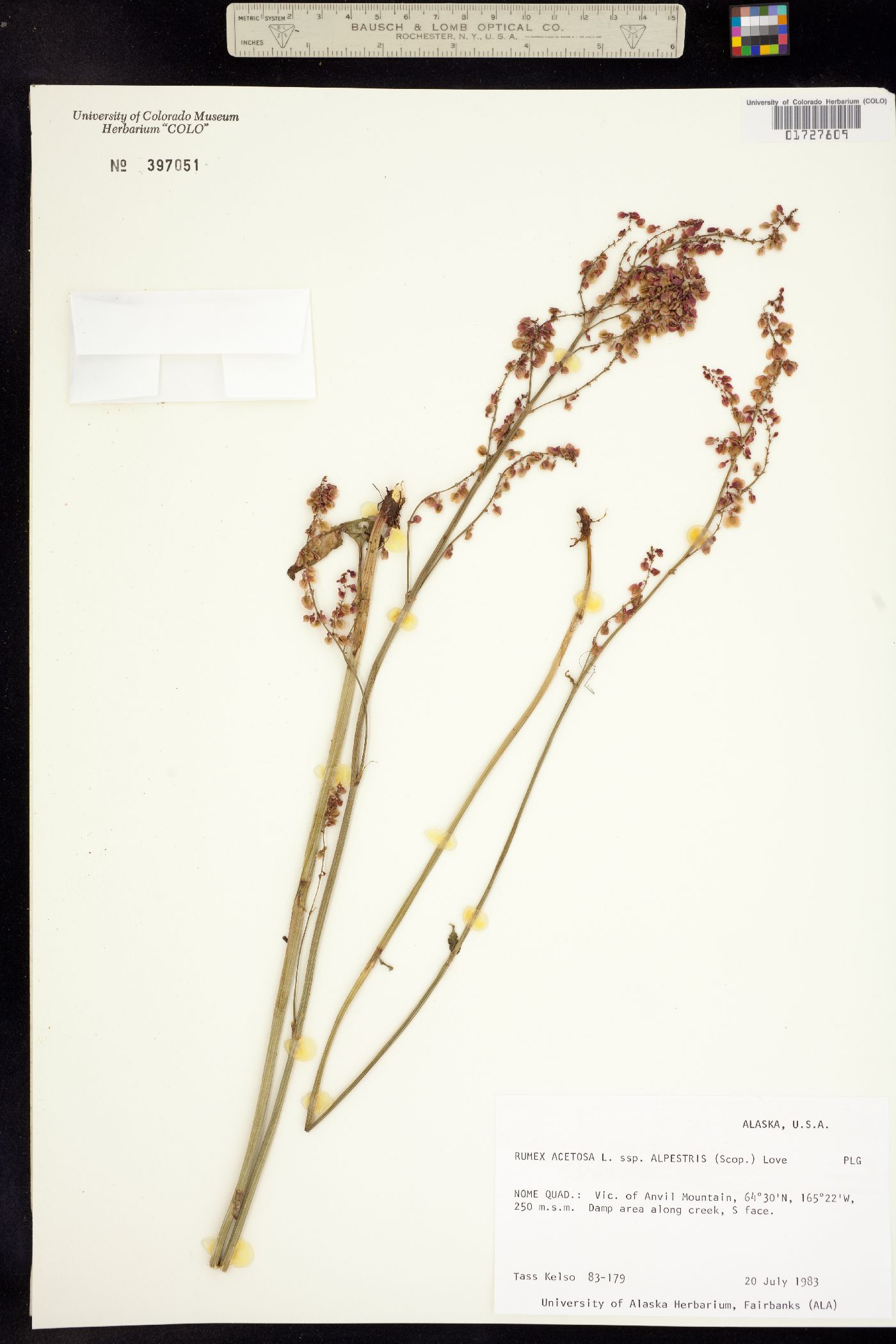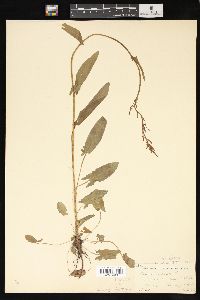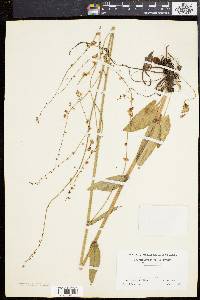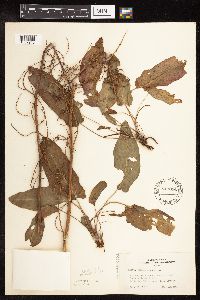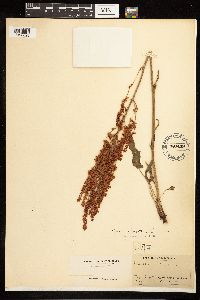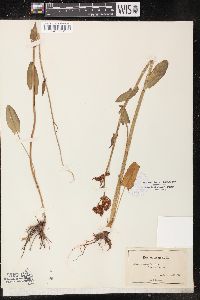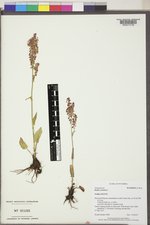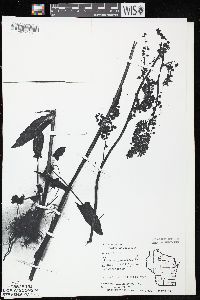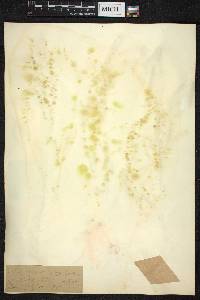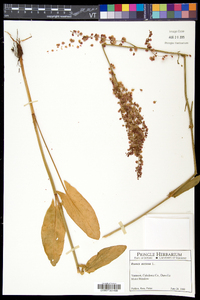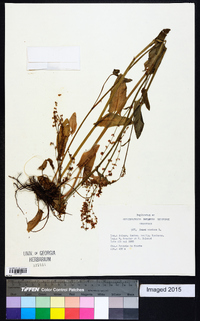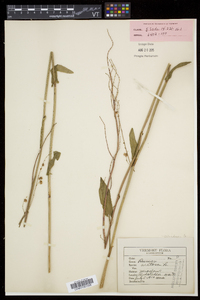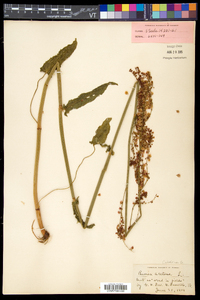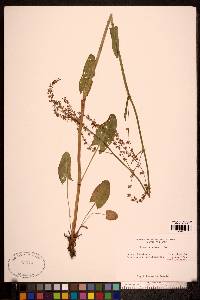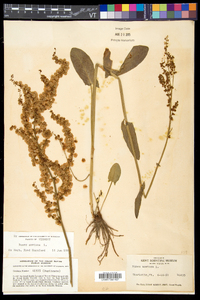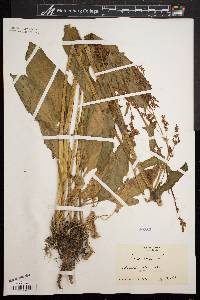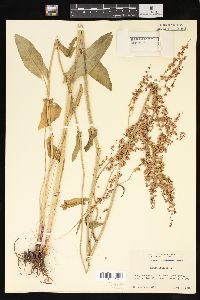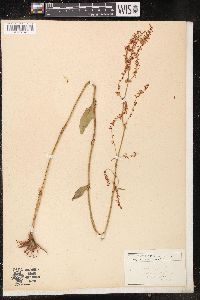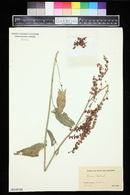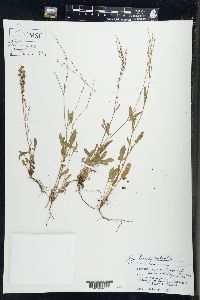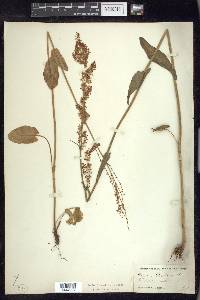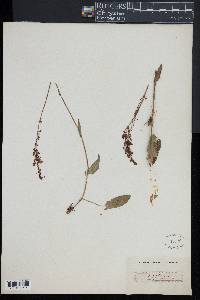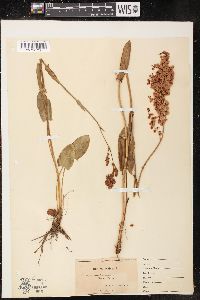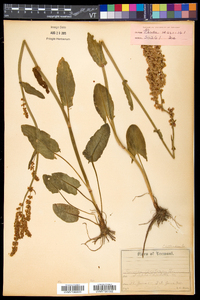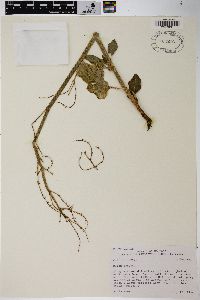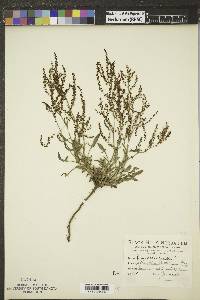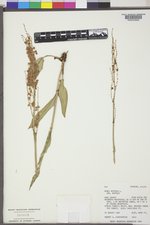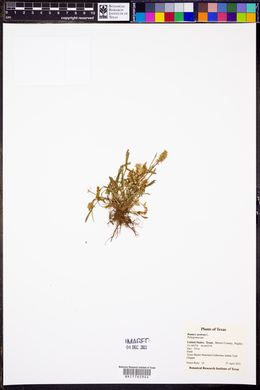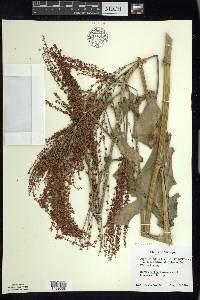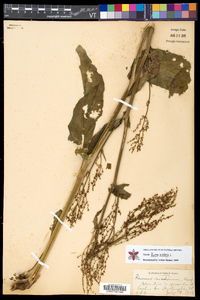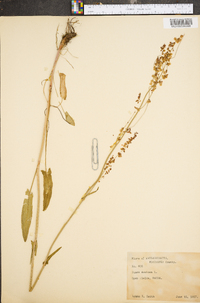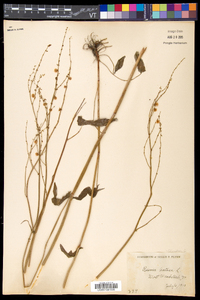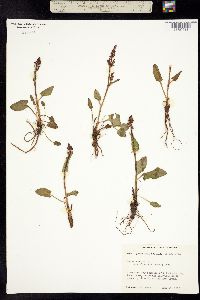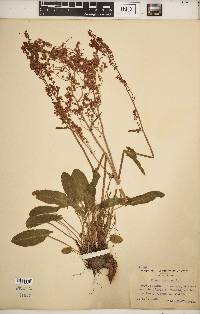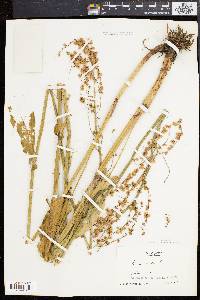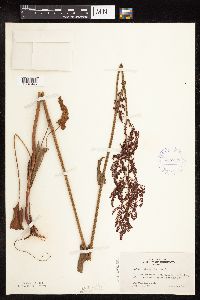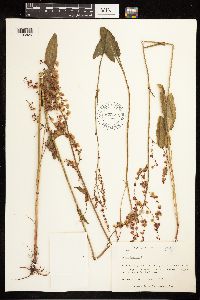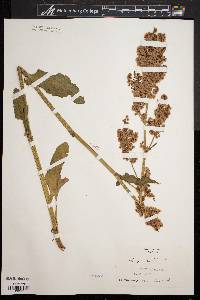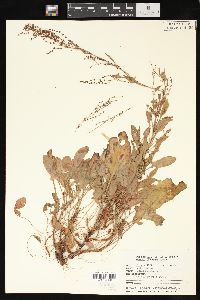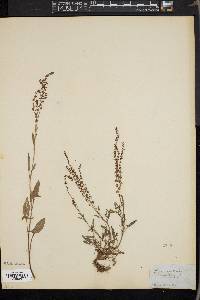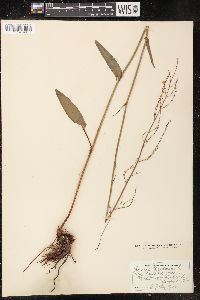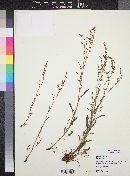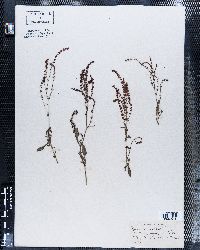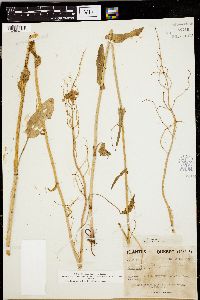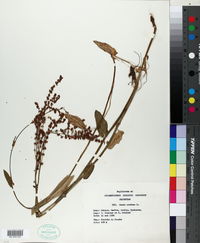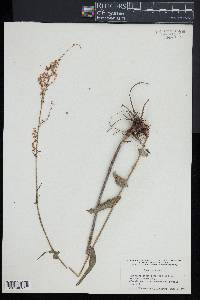
|
|
|
|
Family: Polygonaceae
Garden Sorrel
[Rumex acetosa subsp. ambiguus (Gren.) Á. Löve, moreRumex acetosa subsp. arifolius (All.) Blytt & O.C. Dahl] |
Plants perennial, glabrous or nearly so, with short and relatively thin, horizontal or slightly oblique rootstock (usually not reaching deep into substrate) and ± crowded 2d-order roots. Stems erect or rarely ascending, 1 to several from base, branched in distal 2 (in inflorescence), (25-)30-90(-110) cm. Leaves: ocrea normally laciniate; blade oblong-ovate, ovate-lanceolate, to lanceolate, 4-10(-15) × 1-4(-6) cm, normally more than 2.5 times as long as wide, base sagittate (with acute lobes directed downward, ± parallel to petiole), margins entire, normally flat, apex acute or subacute. Inflorescences terminal, occupying distal 3 of stem, usually lax and interrupted especially in proximal part, narrowly paniculate, cylindric (with 1st-order branches simple, or with few 2d-order branches). Pedicels articulated near middle, filiform, 2-5(-6) mm, articulation distinct. Flowers (2-)4-8(-10) in whorls; inner tepals orbiculate, occasionally broadly ovate, 3-4(-5) × 3-4 mm, base rounded or cordate, apex obtuse; tubercles small or occasionally absent. Achenes black to dark brown, 1.8-2.5 × 1.2-1.5 mm, shiny, smooth. 2n = 14 (pistillate plants), 15 (staminate plants). Flowering spring-early summer. Waste places, meadows, cultivated fields, alluvial habitats; 0-1000 m; introduced; St. Pierre and Miquelon; Alta., B.C., Man., N.B., Nfld. and Labr. (Nfld)., N.S., Ont., Que., Sask.; Alaska, Conn., Maine., Mass., Mich., Minn., N.H., N.Y., Oreg., Pa., Vt.; Europe; nw Africa; Asia. Rumex acetosa is morphologically uniform in North America. It sometimes is misidentified as R. hastatulus orR. acetosella. Collections from North America are few in herbaria, and this species probably is not as common in the flora area as has been generally assumed. Some literature reports for R. acetosa may refer to other taxa of the species group.
Dioecious perennial 3-10 dm, the stems 1-few from a stout root, usually simple to the infl; lvs oblong, all or chiefly sagittate, the lower long-petioled, the upper subsessile; infl 1-2 dm, usually lfless, open, the branches mostly simple; pedicel jointed at about midlength; tep of staminate fls 2-3 mm, the outer oblong, the inner obovate; outer tep of pistillate fls triangular-ovate, nearly 2 mm, soon reflexed; valves thin, broadly round-cordate, 4-6 mm long and wide, reticulate-veiny, the midrib of at least one of them dilated at the base into an evident grain or tubercle; achene dark brown, 2-2.5 mm; 2n=14 (&), 15 (%). Native of Eurasia, in our range an occasional weed from Conn. and Pa. northward.
The closely related Eurasian sp. R. thyrsiflorus Fingerh., with a denser infl, the primary branches again branched, and with the lf-lobes often a little more divergent, has been reported in n. Mich. and on the s. side of the St. Lawrence R. in Que. Gleason, Henry A. & Cronquist, Arthur J. 1991. Manual of vascular plants of northeastern United States and adjacent Canada. lxxv + 910 pp. ©The New York Botanical Garden. All rights reserved. Used by permission. |
This project was made possible in part by the Institute of Museum and Library Services [MG-70-19-0057-19].
Powered by Symbiota

